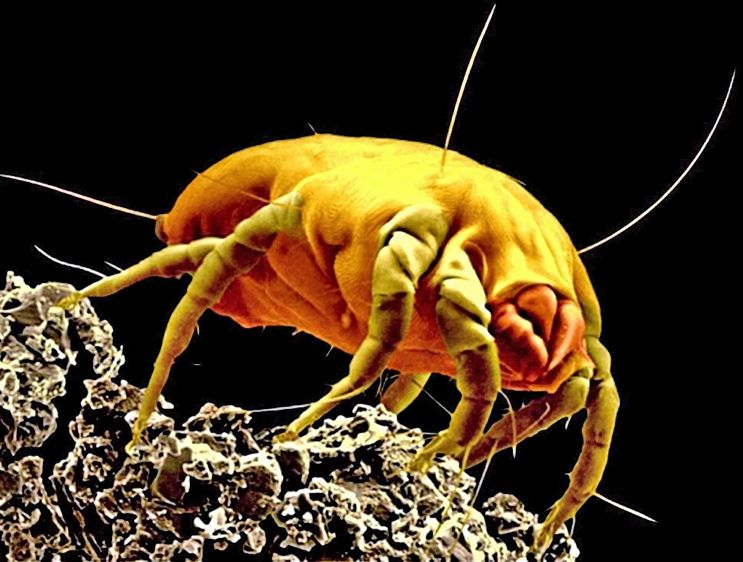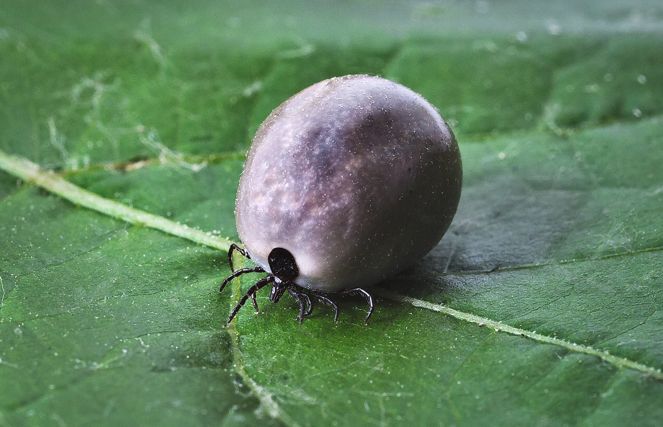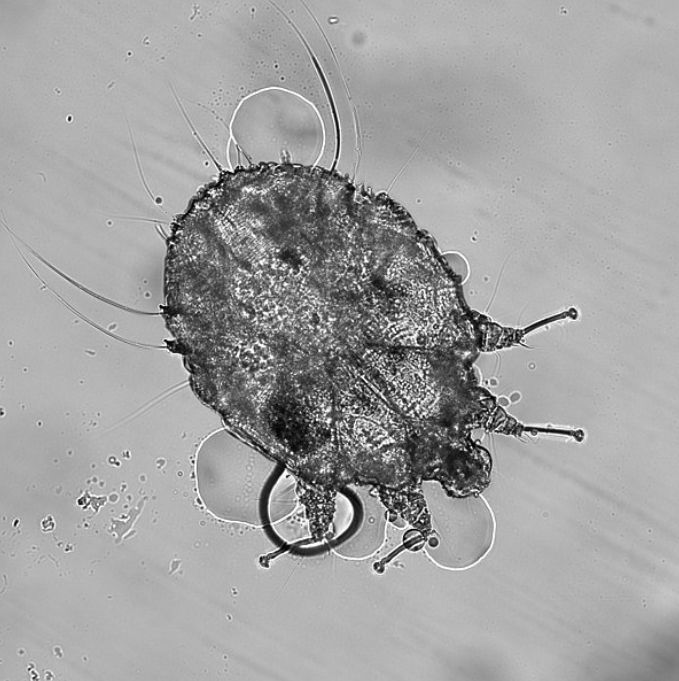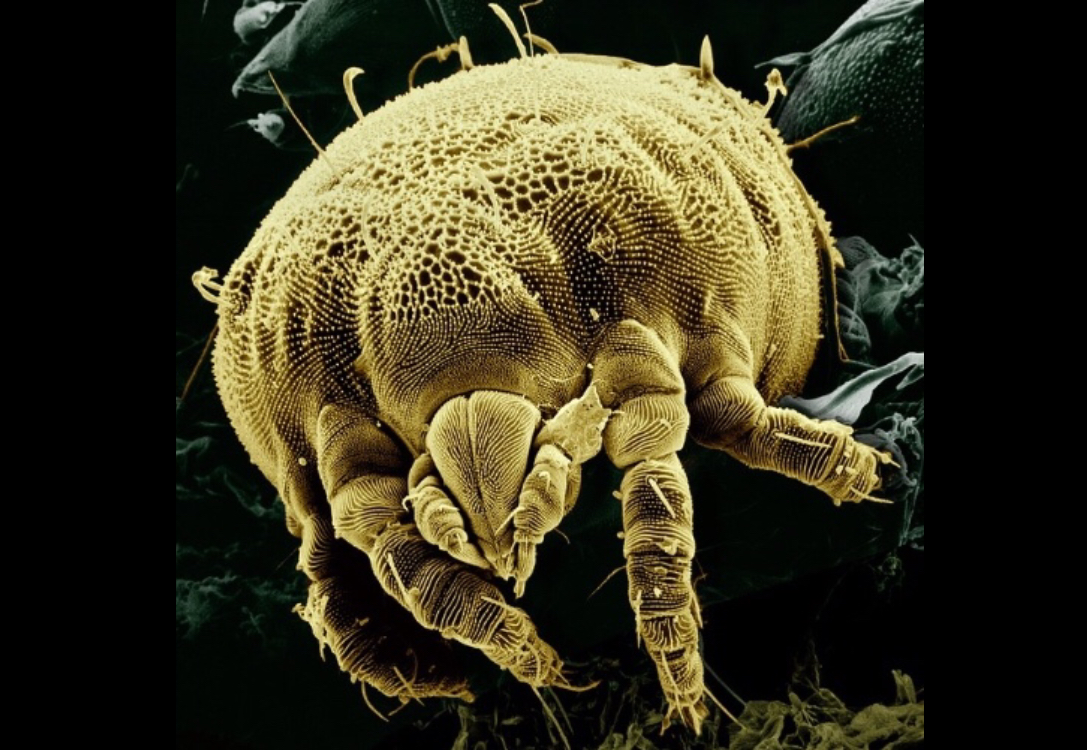
### Our best companion.
During its evolution, **the Man** has always had an intimate relationship with the **animal world**. First hunter, then **breeder**, the cohabitation between these two environments has always been at the center of our **organization of life**.
Became even intimate of our homes and much more a confidante for some.
But according to you, what is our most **faithful companion**? The dog, the cat or the rabbit? Lost, since the animal with the most **of interactions** with us, which accompanies us throughout our life counting by **hundreds ... of thousands** in our habitat is none other than **mite.**
But this invisible **intruder** who invites himself to us without our agreement is it **positive or harmful** for our daily life?
- - -
# Presentation
## What is a mite?
This **microscopic animal** comes from the night of time ... where at least since the earth exists. **mites** are part of the family of **arachnids** (spiders, scorpions etc ...) but their size varies from a few **tenths of millimeters to a few centimeters** for the biggest, the tick by example.
Although only 50 000 species are listed, there is an estimate close to **million species**, and their shape is just as varied.
Nevertheless, there are some similarities between them: their **four pairs of legs** in adults versus three in their larvae, their **prosome and opisthosome (abdomen) fused** and **a simple carapace in protection** .
Mites have a fairly short life, **two to three months**, and the **female** bridge during its lifetime up to **900 eggs.**
Evolving both in the terrestrial and aquatic environment, the largest interaction between mites and man is carried out daily and within our habitat.
https://youtu.be/BUG2yYbRcsQ
# Mites and Men
## Guest of the everyday
Although **invisible to the naked eye**, the mite is present in **our homes**, it is **fed with our food remains** and our **dead skin**, So it's not a surprise to find them on the **carpets, sofas or even our bed.**
## In our bed.
For their **reproduction**, **Dermatophagoides pteronyssinus** need a **wet** location, 60 to 80% humidity, and a **stable** temperature around **26 degree.**
And guess where we find its ideal conditions?
Thanks to our **dander** (rest of dead skin, hair, nail debris) these **mites** have plenty of **food** (0.25 gram of skin residue can nourish **several million** of mites) and with the **transpiration** of the night associated with the temperature of our body, we provide them with ideal conditions for their proliferation. We can accommodate up to **2 million** intruders in our bed.
However, we are **not in direct contact** with this species of mite, which finds the **temperature** of our body a bit **too high** and will therefore prefer to stay overnight at the bottom of the mattress to go back to the surface once the humans have come out from under their blanket to extend their **search for moisture** left by our body where **under our pillow** which will have kept it a little longer.
### On our face
If you are **adult**, you are old enough to have ... mites **on your face.**
A **study** conducted by researchers in North Carolina and California found that **100% of** subjects studied **over 18 years of age** have **mites where traces of passage mites on their faces**. And the more years pass, the more these visitors are present on this one.
There are two species of mites that can wander through your face:
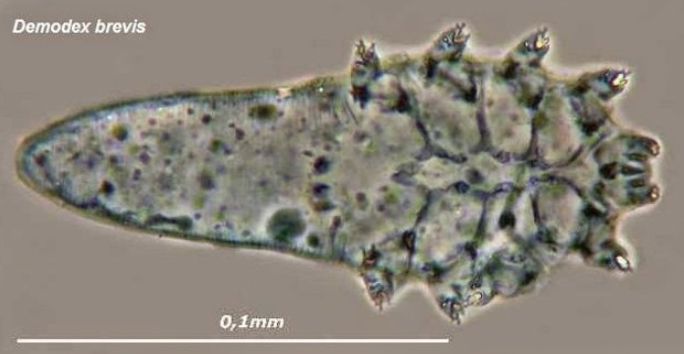
[source](https://commons.m.wikimedia.org/wiki/File:Demodex_Brevis.jpg)
- **Demodex brevis**, they nest in the **pores of the skin**, inside the sebaceous glands and feed on **sebum** (greasy substance used to protect our skin) and **dead cells**. They wait for the night to move and **lay their eggs** in **furrows** dug in our **skin.**
-The **Demodex folliculorum**, are rather appointed by our **hairs** (nose, eyelashes, cheeks) and will be housed in the **cells** that manufacture them.
https://youtu.be/DtpEY7bYfbI
## An unexpected asset
It makes us well services this tiny intruder of our lives. And as usual, humans know how to take advantage of everything around them including mites.
### bio agriculture
The **research** is running, at the INRA their new **biological weapon** is none other than **the killer mite**, which is in charge of getting rid of parasites, aphids or other mites **that thrive on** plants. **This is already the case in** France and Holland , **where 10% to 20% of crops under** heated greenhouse **are treated by this process.**
## All a cheese
**The cheese Velay** is aptly named, since it comes from Puy-en-Velay in the Auvergnat country. But this cheese has a specificity since it is **to the artisons**, a species **of mites** which is poured on **its crust** to ensure its **ripening.**
A hint **of acidity** comes out of this **recipe a little special** but is a hit in the region.
### Scientific police
**Death squad** is the name given to **these mites** that allow the **forensic** to accurately determine **the death time** of a victim.
By studying the behavior of these, (presence, laying, etc.) it is possible to **trace the chronology** of its evolution **on the corpse** to determine **the exact time of death.**
## Attention danger
### Allergy and asthma.
Beware that all **allergies** and **asthmatics** are moving away, since **mites** are responsible for **more than 50% of our allergies** and **a few grams of dust** loaded with mites can trigger an **asthma attack.**

[source](http://cochondingue.telequebec.tv/wikidingue/29/allergie/slides/97/mouchoir-gif/)
The presence, but especially the **excrement**, of its small animals are the main **causes** of its **reactions** harmful to our **organism.**
Suffice to say that with **million** lying in **our bed** and those who find refuges in **the dust**, they **lead us hard.**
But rest assured, there are **simple** everyday solutions to **limit** the number of intruders in our homes:
- **air** regularly your **room** especially in winter will **go down the temperature** and **go down the humidity rate** conducive to their good development.
- **inhale** meticulously every nook and especially **under the bed**, since **2 milligrams** of mites / gram laden with dust can cause an **allergic reaction** and **10 milligrams** of mites / gram of dust and likely to cause **an asthma attack.**
- **wash** your pillows and sheets at **60 degree.**
**Dermatophagoides pteronyssinus** does not survive at temperatures above **55 degrees**, so it's a good way to get rid of them.
https://youtu.be/mEDOsi4JCvE
### The tick
The tick is part of the family of mites, it is also one of the only representatives visible to the naked eye.
She lives in the woods and tall grass while waiting for an animal or human to pass by to fall on her skin in order to cling to it.
Its rostrum is fixed in the skin to feed on the blood of its host.
So far nothing serious since once filled with blood the tick will come off naturally, but the tick is carrying many viruses and the more it stays on us and the more we are likely to catch one.
The best known is the most dangerous is Lyme disease which 10% to 30% of ticks are carriers.
There is also tick-borne encephalitis, which has a vaccine, and the Mediterranean fever fever, which is the least serious of the three.
### Scabies
The sarcopter is the mite at the origin of scabies, the female digs galleries in the superficial part of the skin to lay eggs. The saliva of this mite is irritating and itchy.
It is caught after close contact between two people and transmitted only from humans to humans.
- - -
### Conclusion
Apart from some cases of more or less severe disease caused by certain mites, cohabitation is going relatively well with our invisible domestic animals. As usual, Man adapts to what surrounds him and draws the best for it to evolve and this is still the case with mites.
The only negative point of these arachnids is the allergies and asthma attacks they cause in some people more sensitive to their presence and droppings.
Let's hope that the status quo will continue for a long time and that nothing will be done to eliminate the mites that are in charge of the decomposition of the natural elements.
https://youtu.be/RvuklEpxYKE
Source of research:


